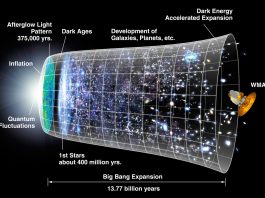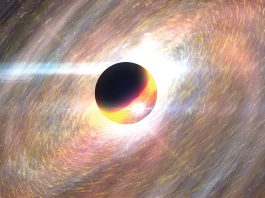Researchers at the Kavli Institute for the Physics and Mathematics of the Universe (Kavli IPMU) have utilised string theory to understand the behaviour of particles outside the photon sphere of a black hole.
Director Ooguri Hirosi, and project researcher Mathew Donaldson, outlined this research in a new paper published in the journal Physical Review on 24 March 2021. By utilising images captured by the Event Horizon Telescope (EHT) of the supermassive black hole in the heart of the M87 Galaxy, the researchers have managed to solve an interstellar conundrum that has evaded the laws of quantum theory.
A fundamental quality of quantum theory is the correlation function, which is the probability that a particle has to disseminate from one point to another – developing singularities when the aforementioned points are connected by light-like trajectories, which occur in flat spacetime. However, when spacetime is curved, such as in a black hole, there can potentially be numerous light-like trajectories connecting two points, which is the result of gravitational lensing – the effect of curved geometry on the propagation of light.
In black hole spacetime, the light trajectories circumnavigate the singularity multiple times, creating the photon sphere – the ring of light surrounding the black hole, which occur in the region of a black hole where light entering in a horizontal direction can be forced by gravity to travel in various directions. Nevertheless, there are occurrences where these singularities that are revolving around the black hole contradict physical expectations, with string theory finally being able to shine a light on this dark mystery.
Each particle in string theory is considered as a particular excited state of a string; throughout its light-like trajectory, the particle experiences tidal effects due to the curvature of the spacetime, which stretch the string. Dodelson and Ooguri demonstrated that by accounting for these effects, the singularities disappear with physical expectations – solidifying that quantum gravity must contain extended objects such as strings as its degrees of freedom.
Ooguri explained: “Our results show how string theoretical effects are enhanced near a black hole. Though the effects we found are not strong enough to have an observable consequence on ETH’s black hole image, further research may show us a way to test string theory using black holes.”









